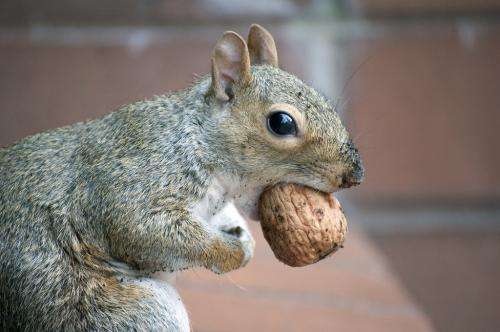The secret life of squirrels in New York City

A recent study has found eastern grey squirrels thrive in New York City's urban environment by adapting their behaviour according to cues from human pedestrians, and mostly by ignoring passers-by.
Dr Bill Bateman from Curtin University has spent many years in Manhattan informally and now formally, investigating the behaviour of squirrels to better understand how we can help them survive in cities.
"As urbanisation increases, urban areas around the world may end up being important places for some wildlife," says Dr Bateman.
"It would be good to know what they like about those areas, what allows them to do well and whether we humans want them to be there."
"If we do, we can discover what we need to do to help their continued success."
Researchers investigated squirrels' ability to modify their behaviour when pedestrians show unusual behaviour and tested whether squirrels could discriminate between pedestrians who look directly at them and those who do not.
Squirrels were approached on a trajectory that took the observer within two metres of them and the researchers measured alert distance, flight initiation distance (FID) and distance fled for each individual.
Only five per cent of individuals moved away when the pedestrian remained on the footpath and looked at them. However, when squirrels were approached by a pedestrian who moved off the footpaths and looked at them, 90 per cent of squirrels moved away, with longer FID and flight distance.
Behaviour change allows co-existence with humans
Squirrels reduced their need to make unnecessary responses by modulating their reactions when pedestrians behaved in a predictable manner and by being sensitive to the direction of humans' attention.
"Behavioural adaptations allow animals of some species to live alongside stimuli and events that we would normally consider dangerous or threatening," says Dr Bateman.
"What is astonishing is that in an iconic urban cityscape like Manhattan, they are doing just as well, if not better, than fellow grey squirrels in the woods."
"To a successful urban adapter, a building is the same as a tree, the top of an air conditioner unit is a nesting nook on a branch, a handful of pretzel crumbs are fallen acorns."
Researchers at Curtin and Murdoch University plan to expand on their findings by studying other species' behavioural responses to humans and their activities in different urban environments.
"We need to monitor such species just as we need to monitor species in undisturbed areas so we don't see more loss of biodiversity."
More information: Bateman, P. W. and Fleming, P. A. (2014), "Does human pedestrian behaviour influence risk assessment in a successful mammal urban adapter?". Journal of Zoology. doi: 10.1111/jzo.12156
Journal information: Journal of Zoology
Provided by Science Network WA


















